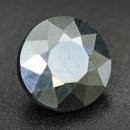|
|
||||||||||||||||
|
||||||||||||||||
|
||||||
|
|
|
|
Coronadite
|
|
| | |
| Discovered in 1904; IMA status: Valid (pre-IMA; Grandfathered) | ||
|
| ||
|
Chemistry |
|
|
| |
|
Pb(Mn4+,Mn2+)8O16 | |
|
|
Lead Manganese Oxide |
|
Molecular Weight: |
933.55 gm |
|
Composition: |
Barium |
1.47 % |
Ba |
1.64 % |
BaO |
|
|
Manganese |
45.31 % |
Mn |
3.80 % |
MnO / 67.05 % MnO2 |
|
|
Aluminum |
0.29 % |
Al |
0.55 % |
Al2O3 |
|
|
Vanadium |
1.09 % |
V |
1.95 % |
V2O5 |
|
|
Lead |
24.41 % |
Pb |
26.30 % |
PbO |
|
|
Oxygen |
27.42 % |
O |
|
|
|
|
|
100.00 % |
|
101.29 % |
= TOTAL OXIDE |
|
|
|
||||
|
Classification |
|
|
| |
|
Oxides | |
|
4/D.08-70 | |
|
|
4 : OXIDES (Hydroxides, V[5,6] vanadates, arsenites, antimonites, bismuthites, sulfites, selenites, tellurites, iodates)
|
|
Related to: |
Coronadite Group (synonym: Cryptomelane Group). Hollandite Supergroup. Isostructural with Hollandite and Cryptomelane. |
|
Members of Group: |
Coronadite Group: Coronadite, Cryptomelane, Ferrihollandite, Hollandite, Manjiroite, Strontiomelane |
|
Varieties: |
None |
|
Synonyms: |
None |
|
|
|
|
Crystal Data |
|
|
|
|
|
As fibrous botryoidal aggregates, banded with other manganese oxides; as microscopic curved lamellae; laminated, granular, massive. |
|
|
None |
|
|
|
|
|
Physical Properties |
|
|
|
|
|
n/a |
|
|
n/a |
|
|
Brittle |
|
|
4.5 - 5.0 |
|
|
5.246 - 5.505 (g/cm3) |
|
|
None |
|
|
Not Radioactive |
|
|
|
|
|
Optical Properties |
|
|
|
|
|
Dark gray to black; white in reflected light |
|
|
Opaque |
|
|
Dull to submetallic |
|
|
Biaxial |
|
|
0.000 (opaque) |
|
|
Strong; r > v |
|
|
Strong; dark brown to gray |
|
|
Strong; nearly Galena-white |
|
|
|
|
|
Occurances |
|
|
|
|
|
Geological Setting: |
A primary mineral in hydrothermal veins or from hot springs; of secondary origin in oxidized zones above manganese-bearing rocks; also in bedded sedimentary deposits. |
|
Common Associations: |
Hollandite, Pyrolusite, other manganese oxides |
|
Common Impurities: |
Fe, Al, H2O |
|
Type Locality: |
Horse-Shoe shaft (Horseshoe Mine), Coronado Mine (Coronado Mining Co. property; Arizona Copper Co. group [in part]), Coronado vein, Copper Plate Gulch, Copper Mountain District (Clifton-Morenci District), Shannon Mts, Greenlee County, Arizona, USA |
|
Year Discovered: |
1904 |
|
View mineral photos: | |
|
|
|
|
More Information |
|
|
|
|
|
| |
|
|
|
|
Coronadite was first described and named in 1904 by Waldemar Lindgren and William F. Hillebrand from material found on the dump of a small mine shaft on the west end of the Coronado vein, three-fourths of a mile west of Horseshoe shaft of the Coronado Mine, Clifton-Morenci district, Greenlee County, Arizona, USA. Lindgren and Hillebrand proposed the name "Coronadite" to honor Francisco Vasquez de Coronado (1510-1554), a Spanish conquistador and explorer of the American southwest who had visited the region in 1540. Hillebrand said: "We propose the name Coronadite, after the famous explorer of that portion of the American continent from which the Territories of New Mexico and Arizona have been formed." They described Coronadite as "a black metallic mineral, not unlike Psilomelane in general appearance, and intemately intermixed with Quartz, is found in fairly large amount in the Coronado vein." Coronadite
distribution: Widespread; a few localities for pure
or well-characterized material include: in the USA,
in Arizona, from the Coronado vein, Clifton-Morenci
district, Greenlee County; the Magma mine, Superior,
Pinal County; from the Artillery Mountains, Mohave County,
and elsewhere. In New Mexico, from the Luis Lopez district,
Socorro County. From the Philipsburg district, Granite
County, Montana. In Mexico, from the Talamantes district,
Chihuahua, and in the Ojuela mine, Mapimí, Durango.
At many places in the Ouarzazate and Oujda districts,
and elsewhere in Morocco. From the Almalyskoye Pb–Zn
deposit, Kurgashikan, Uzbekistan. In the Dry Gill mine,
Caldbeck Fells, Cumbria, England. In France, from the
Richesse mine, near Bourgeten-Huile, Savoy. At Dongari
Buzurg, Bhandara, Madhya Pradesh, and Kodur, Andhra
Pradesh, India. From Broken Hill, New South Wales, and
in the Puttapa zinc mine, near Beltana, South Australia.
At Tsumeb, Namibia.
|
|
|
We
have not photographed our Coronadite
gems yet. Please
check back soon. |
